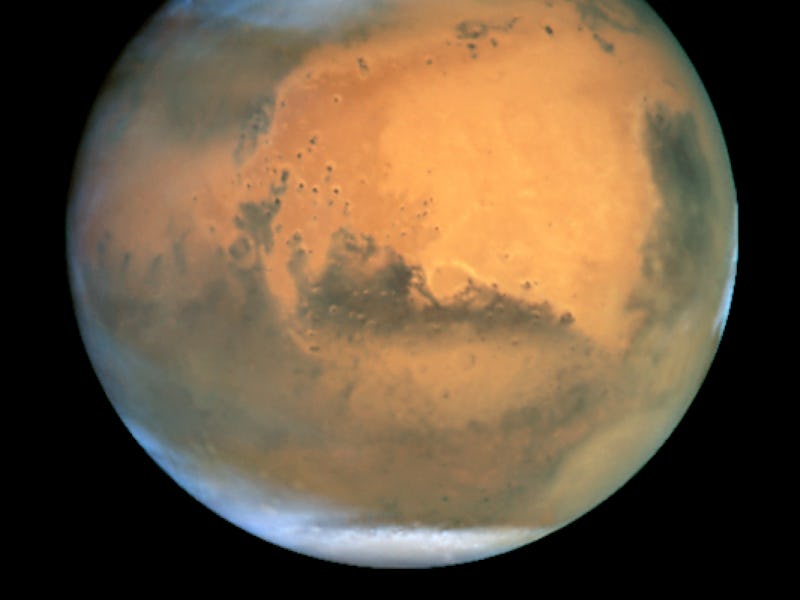How to See Mars Looming Large in the Night Sky as Opposition Ends
Finding the Red Planet with your naked eye should be no problem tonight.

Today, Mars and Earth will reach the closest point in their orbits. At 46.8 million miles, the distance between the Red Planet and our green and blue planet will be as small as it has been since 2005. This means Mars will appear unusually large and bright in the night sky and that anyone capable of getting away from streetlights won’t need a telescope to find it. Mars will appear largest at precisely 5:35 p.m. EST, when it will be 97 million miles closer than it was at the beginning of the year, and 10 times brighter.
This planetary drive by is the culmination of a phenomenon called Mars Opposition, in which the Earth lines up directly between Mars and the Sun every two years or so.
Those who can’t get away from lights can watch a livestream of the phenomenon on Slooh, the radio telescope streaming site, beginning at 9 p.m. EST (don’t worry, it’ll still look pretty much the same size as it did a few hours earlier). Host Paul Cox and Slooh astronomer Bob Berman will be on hand during the livestream to explain the finer points of the night. One of the more exciting elements of the event will be the opportunity to see the regions of the planet’s surface where rovers have landed.
While it was exactly opposite the Sun last week, May 30 is when Mars will appear largest in the sky (these dates are slightly apart because Mars and the Earth have elliptical orbits, not perfectly circular ones). Unfortunately, it’s just an urban legend that it will appear as big as the moon, which is a physical impossibility given Mars’ vastly greater distance from the Earth.
Though it’s been over than a decade since Mars wandered this far earthward, it’ll actually be just another two years before it gets closer still. The next opposition will bring the planet within 35.8 million miles of our home.
Because Mars is so unusually close, astronomers are getting uniquely clear and detailed images from telescopes like Hubble. Scientists are also capitalizing on Mars’ proximity to launch missions like the European Space Agency’s ExoMars project. The ExoMars Trace Gas Orbiter launched earlier this month and is expected to send down a “small, static lander in October,” according to Professor John Bridges of the University of Leicester’s Space Research Center.